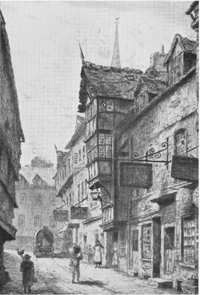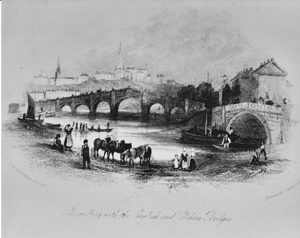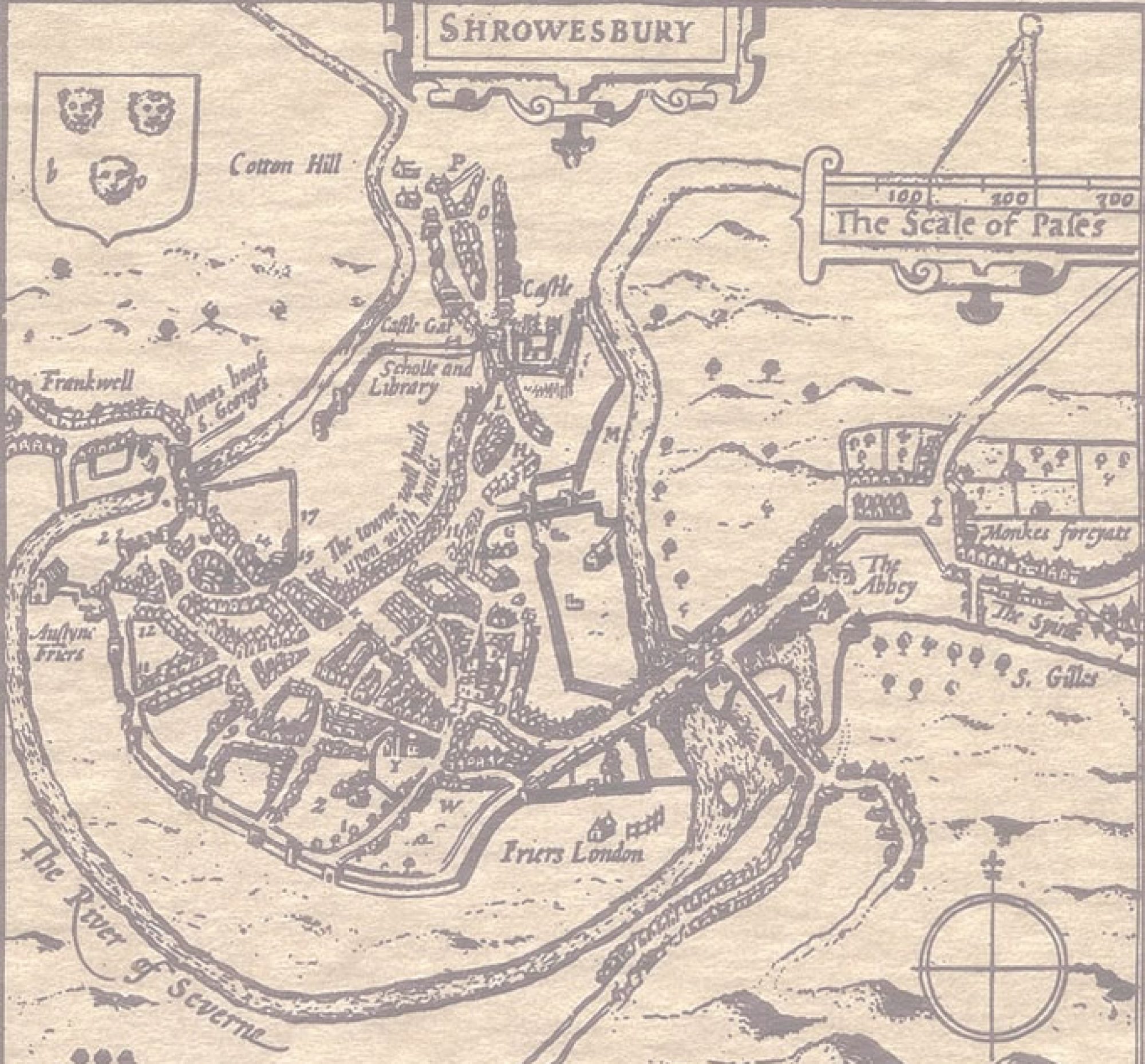
One of the recurring themes of Christmas is the one provided by Dickens’ Christmas Carol, where the miserly Scrooge, transformed by the spirit of Christmas, shares his wealth with the poor. Of course this is fiction, but behind the story is a reality of wealth and poverty which was reflected in the Shrewsbury of Dickens’ era.
Henry Pidgeon (1806-71) [see footnote 1] would later become well known as the author of Memorials of Shrewsbury. But when he began a diary in 1823, which he grandly called ‘Salopian Annals, Volume I’, he was just an 18 year-old apprentice in a chemist’s shop. Some of his first entries give a flavour of the challenges facing the poor at that time:
Jan 11th – ‘The small pox and measles are very prevalent in our town, especially among the lower orders of people, the dwellings of which in general are not kept clean and properly ventilated.’
Saturday Jan 25th – ‘The frost for the last fortnight has been extremely severe, in consequence of which our river soon admitted of a passage over, and has afforded amusement to a great number of skaiters [sic], sliders, etc. There was a heavy fall of snow this evening.’
Tuesday Jan 28th – ‘A very rapid thaw. Our streets afford a dangerous passage in consequence of the great thickness of ice which had formed over them.’ [see footnote 2]

For most of the population of Shrewsbury life was extremely precarious. Henry came from a reasonably prosperous background which enabled him to live comfortably on Shrewsbury’s High Street, and have access to medical care. He was also educated, and so could earn a regular living working indoors. On the other hand, most of the 15,000 or so inhabitants of the town lived in filthy multi-occupied dwellings. For example, a little later in the century Butcher Row was subdivided into around 40 units of accommodation, and was home to 187 people, at least one of whom kept chickens in the house! Water supply from pumps was unreliable, so many people had to obtain water from the river, into which most of the town’s sewage found its way. As a consequence, the life expectancy of the poor was around 35, with anything up to a quarter of infants dying before their first birthday. [see footnote 3]
Bad weather meant that people who worked outside or on the river had no work. Without work they had no income, and there were, of course, no benefits. Snow and ice on untreated roads resulted in many falls and fractures. The system of poor relief, which was administered through the parishes, had been in place since Elizabethan times, and was quite inadequate to deal with the needs of an urban population. The only other means of support was charity, and Henry also chronicled the progress of two of these charities, The Sick Man’s Friend and Lying-in Charity, and The Good Samaritan Society. Each year these charities, financed by subscriptions from the better-off like Henry, helped hundreds of the sick poor with practical items, money and medicine, and many women through pregnancy and childbirth. They only finally ceased to exist in the 1950s after the advent of the NHS. [see footnote 4]
Footnotes
[1] Memorial tablet St Chad’s, 23.03.1806 – 19.07.1871
[2] Shropshire Archives, SA 6001/3055
[3] www.shropshireroots.org.uk (accessed Jan 2012); 1851 census; Fletcher, JMJ, Mrs Wightman of Shrewsbury, London, Longmans Green & Co, 1906, p. 53-4
[4] Hulbert, Charles, The History and Description of the County of Salop, 1837, p.318; see also here
